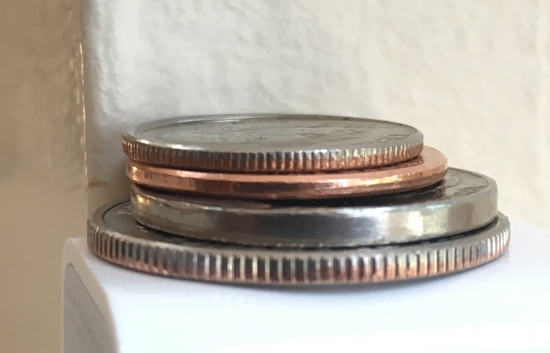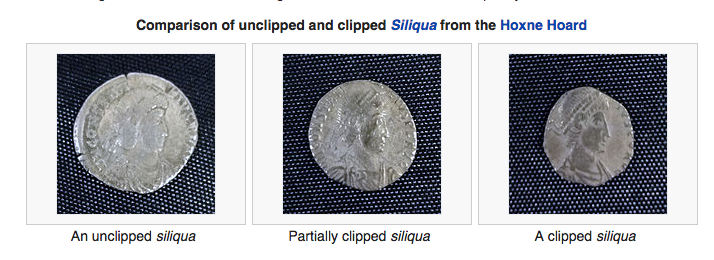Why (Some) Coins Have Ridges

Pictured above are the four most common U.S. coins — from top to bottom, a dime, penny, nickel, and finally, a quarter — seen from their edges. You’ll note that the edge of both the dime and quarter have ridges, little grooves running perpendicular to the coin face. The penny and nickel, though, have a smooth edge. This is something you’ve probably noticed before if you handle American coins regularly, but like many design choices, probably not one you gave a second thought.
You can thank Sir Isaac Newton for them.
Newton is most famous as a scholar. His work as a physicist — articulating rules around gravity, force, motion, inertia, etc. — is his claim to fame. But toward the end of his career, he found himself in a less academic job. In 1696, Newton was tapped as the Warden of the Royal Mint, and three years later, was elevated to Master of the Royal Mint. These positions were, typically, considered ceremonial government honors for those citizens who had already aspired to greatness — not roles with real responsibilities. But Newton, seeing that the UK had a massive counterfeit coin problem, took the role seriously.
The problems began with something called “coin clipping.” For centuries, coins were made of precious metals — gold and silver, often — and therefore, had intrinsic value beyond their stated denominations. You could shave a bit off the edge of a coin, keep the clipped-off piece for yourself, and use the almost-complete coin in a subsequent transaction. From pass to pass, the coin’s change in size and shape would hardly be noticeable. But in time, it became obvious. Here’s a screenshot from Wikipedia of three otherwise similar coins dating back to the 4th or 5th century, showing the effect of coin clipping.

Over time, you’d end up with coins that merchants would understandably be quick to reject. But the problem was even worse than that. HowStuffWorks explains:
The average bag of English coins was just a hodgepodge of damaged and unrecognizable silver chunks. As such, forgers had a field day. Since English coins varied so widely in size and quality, it was easy to pass off even the most sloppy knockoffs as legal tender. Riots broke out as faith in the English currency plummeted.
And that’s the situation in which Newton found himself as the 1600s came to a close: coin clipping had created a culture of counterfeiting. Curtail coin clipping and you’d stem the tide.
The ridges — or, the “reeded edge” as it is sometimes called — were part of the solution, at least going forward. By adding an identifiable feature to the edges, clippers could no longer remove part of the coins subtly. Anyone receiving the clipped coin would, nearly instantly, know that it was manipulated. It’s an innovation that, per Mental Floss, carried over into the U.S. and other nations as well.
So, why do the penny and nickel not have this security feature? As they weren’t minted from precious metals, they were never worth clipping. While quarters and dimes were, at times, made from silver, the smaller-denomination coins have generally had a melt value too small to warrant tinkering with their edges. Today, that’s true for dimes and quarters as well; the reeded edges they’re adorned with are, in that sense, antiquated.
Bonus fact: In the late 1200s, coin clipping was used as the pretext for a rarely told incident of government-driven anti-Semitism. Clipping was very common at the time, with people of all backgrounds participating in the fraud, but a British crackdown targeted Jewish families. Haaretz explains: “On November 17, 1278, all the Jews of England were subjected to arrest and search of their homes on suspicion of coin clipping and counterfeiting. Eventually, some 680 were imprisoned in the Tower of London, where it is believed that more than 300 were actually executed in 1279. At the time, the Jewish population of England is believed to have been some 3,000.” By 1290, almost all Jews were expelled from Britain.
From the Archives: Collecting Dust, Not Interest: The sad state of America’s $1 President coins.
Related: “The Official Guide to Coin Grading and Counterfeit Detection, 2nd Edition.” It’s “official” because it’s a publication of the “Professional Coin Grading Service,” which I’m surprised to learn exists.
